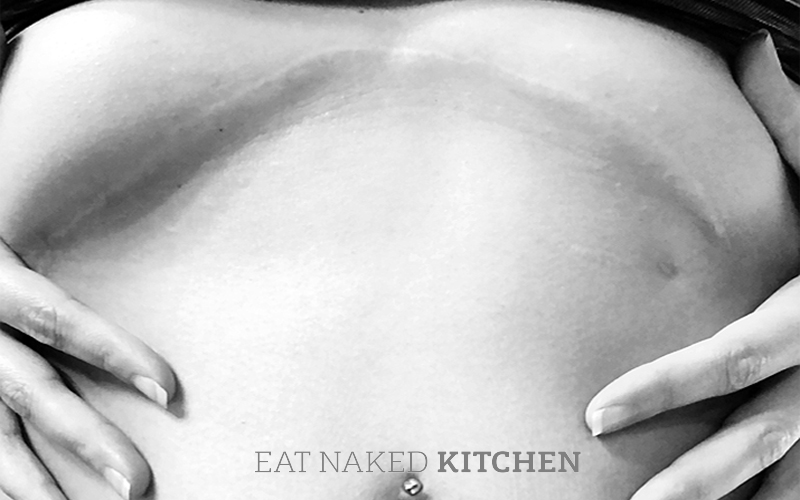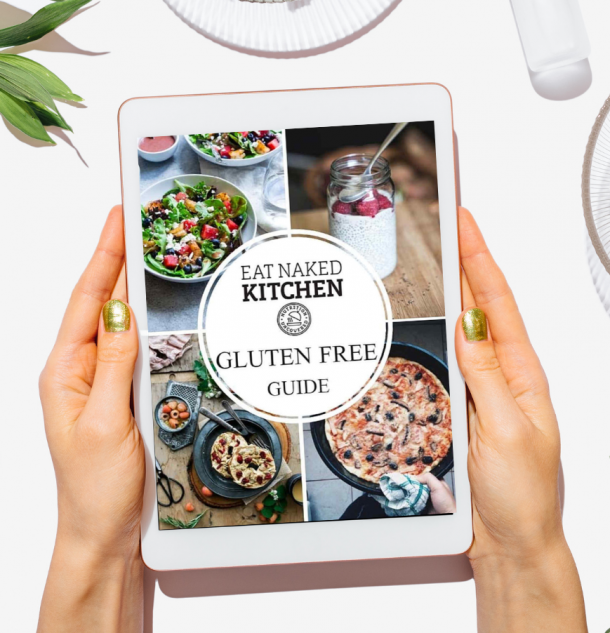“My gut has never been the same since.”
That’s what my client, we’ll call her Heidy, said to me as she listed off the digestive issues she was struggling with after her gallbladder was surgically removed.
“My digestion used to be fine, but ever since that surgery I’m either wildly constipated and don’t have a bowel movement for several days, and then, when it does come, it’s HUGE and really loose. Not quite diarrhea, but so uncomfortable. And the bloating… oh my goodness, I’m always bloated. I look like I’m 6 months pregnant all the time, and just about everything I eat makes it so much worse.”
I hear this kind of thing all the time. Incredible digestive distress after a cholecystectomy, the surgical removal of the gallbladder.
“How do you do when you eat a fatty meal?” I asked.
“Oh my God, I can’t even look at a meal with fat in it. My stomach just can’t process it. It will have me curled in a ball in pain.”
If any of this sounds familiar, I have good news for you: while I can’t get your gallbladder back, I can teach you some strategies for how to offset the damage the surgery has done, how to mimic the key digestive function of the gallbladder with supplements, and how to reduce those symptoms you’re now likely experiencing.
First, let’s all get on the same page about the important role of the gallbladder in the digestive process.
The gallbladder is a little sack, about the size and shape of an un-inflated balloon, that sits just below the liver. As the liver creates bile, it enters into the gallbladder via the hepatic duct. The gallbladder then stores this bile until you eat a meal that contains fat, at which point it squirts the bile into the top part of the small intestine, called the duodenum, via the common bile duct.
Bile has several important jobs:
- It escorts toxins neutralized by the liver out of the body via the bowels.
- It stimulates peristalsis, which are the rhythmic muscular contractions of the small and large intestines that keep the contents of the digestive tract moving along
- And it acts as an emulsifier to break down large fatty globules into smaller molecules. Think of it like a detergent in your dishwater, breaking apart the fats into smaller components.
As you can see, bile is essential to the elimination of toxins, to the digestive process overall, and to the breakdown and absorption of fatty acids in particular.
In a cholecystectomy, the gallbladder is removed and the common bile duct is connected directly from the liver to the small intestines. As such, bile is no longer being stored and then squirted out when it’s needed; rather, it is on a steady slow drip into the duodenum. This means that there’s not enough bile to properly digest fats when you need it, which is when you’ve eaten a meal that contains fat, and there’s too much bile when you don’t need it, which is between meals.
Bile is very caustic and can be quite irritating to that delicate lining of the small intestine. When you’ve eaten a meal, there are substances secreted that will protect that small intestine lining from damage, but those aren’t being secreted between meals, which means that bile is irritating and damaging the lining of the small intestine, which can lead to a host of issues such as a compromised gut barrier (also known as leaky gut), food sensitivities, and a host of uncomfortable symptoms such as bloating, pain, and irregular bowel movements.
So what can you do about it?
Two things:
- Mimic the digestive function of the gallbladder by supplementing with bile salts when you eat meals, particularly those meals that contain fat. Think of this as a gallbladder replacement strategy – you’re replacing the digestive function of the gallbladder by providing your body with bile salts when you need them.
- Soothe the irritated gut lining with gut-healing agents such as marshmallow root, aloe, l-glutamine, deglycrrhizinated licorice, chamomile, and other soothing herbs and nutrients. This is the reparative part of the strategy – minimizing damage and irritation caused by the slow steady drip of that caustic bile.
These strategies can make a remarkable difference to your ability to digest fats, to your digestive health overall, and to the reduction of symptoms that have occurred as a result of losing that gallbladder. They may not resolve all your digestive issues, but they are certainly a core piece of the process for anyone who’s had their gallbladder removed.
If you’ve followed these strategies and still are experiencing discomfort, seek out the support of a functional practitioner who can help you adjust your diet and test to determine what other underlying issues may be causing or contributing to digestive distress. In fact, if you’ve been struggling for a while before applying these strategies, it’s a very good idea to do some targeted gut healing as there is likely some digestive distress even in the absence of symptoms.
If you’ve followed these strategies and still are experiencing discomfort, seek out the support of a functional practitioner who can help you adjust your diet and test to determine what other underlying issues may be causing or contributing to digestive distress. In fact, if you’ve been struggling for a while before applying these strategies, it’s a very good idea to do some targeted gut healing as there is likely some digestive distress even in the absence of symptoms. This is the kind of work I do, or click here for a list of practitioners my business partner and I have personally trained in the techniques and tools we use to support our clients.
Disclaimer:
The information provided in this post is based on the opinions of the author unless otherwise noted. All information is intended to motivate readers to make their own nutrition and health decisions after consulting with their health care provider. Margaret is neither a doctor, lawyer, psychiatrist, or therapist.
We encourage you to consult a doctor before making any health changes, especially any changes related to a specific diagnosis or condition. No information in this post should be relied upon to determine diet, make a medical diagnosis, or determine treatment for a medical condition. The information in this post is not intended to replace a one-on-one relationship with a qualified health care professional and is not intended as medical advice.
NO information in this post should be used to diagnose, treat, prevent or cure any disease or condition.
By reading this post, you acknowledge that you are responsible for your own health decisions. Any statements or claims about the possible health benefits conferred by any foods or supplements have not been evaluated by the Food & Drug Administration (FDA) and are not intended to diagnose, treat, prevent or cure any disease.







I had my gallbladder removed about 25 years ago after several attacks of extreme pain and vomiting. It would have to be among the worst health decisions I have mad or had made for me. I have all of the reactions you note on top of the fact that I have had constant pain at the site ever since, which also feels like I am being stabbed in the ribs every time I bend over As well as severe reflux and nausea.
I have tried bile salts but they burn and seem to make reflux worse and at times the liquorice and l-glutamine but probably not in any cohesive way.Lyn
Hi Lyn, it sounds like you’d really benefit from working with a practitioner who can help you navigate these issues. In the meantime, I’d recommend working with the gut-healing nutrients first, dosing them twice a day, and then trying the bile salts again starting at a very low dose. The idea is that you start with healing/soothing, and then bring in the digestive support. This may help. And it’s also quite possible that there’s more damage and you need to work through this systematically under professional guidance.